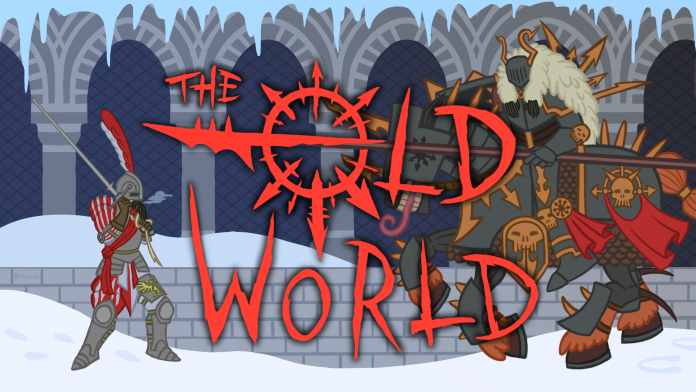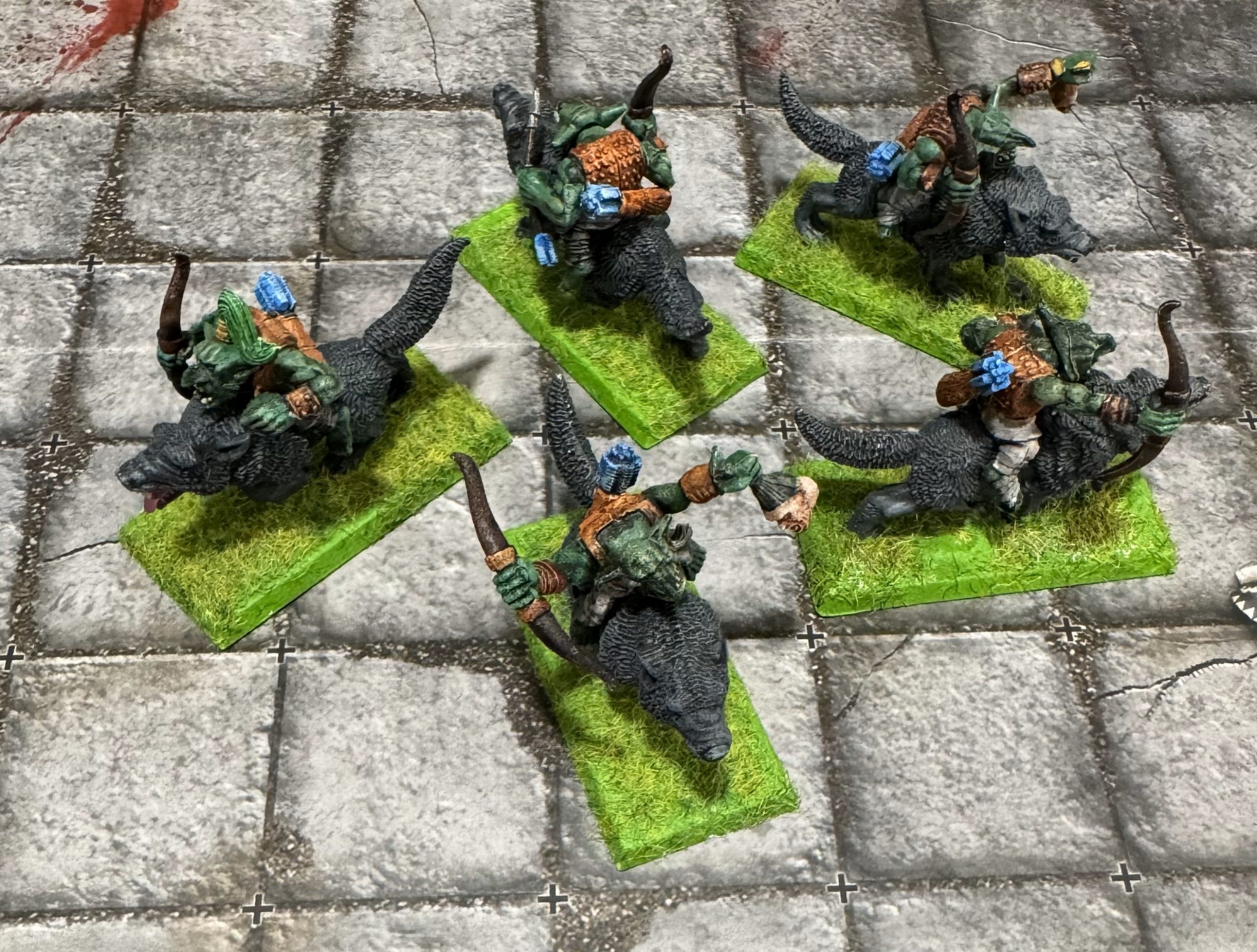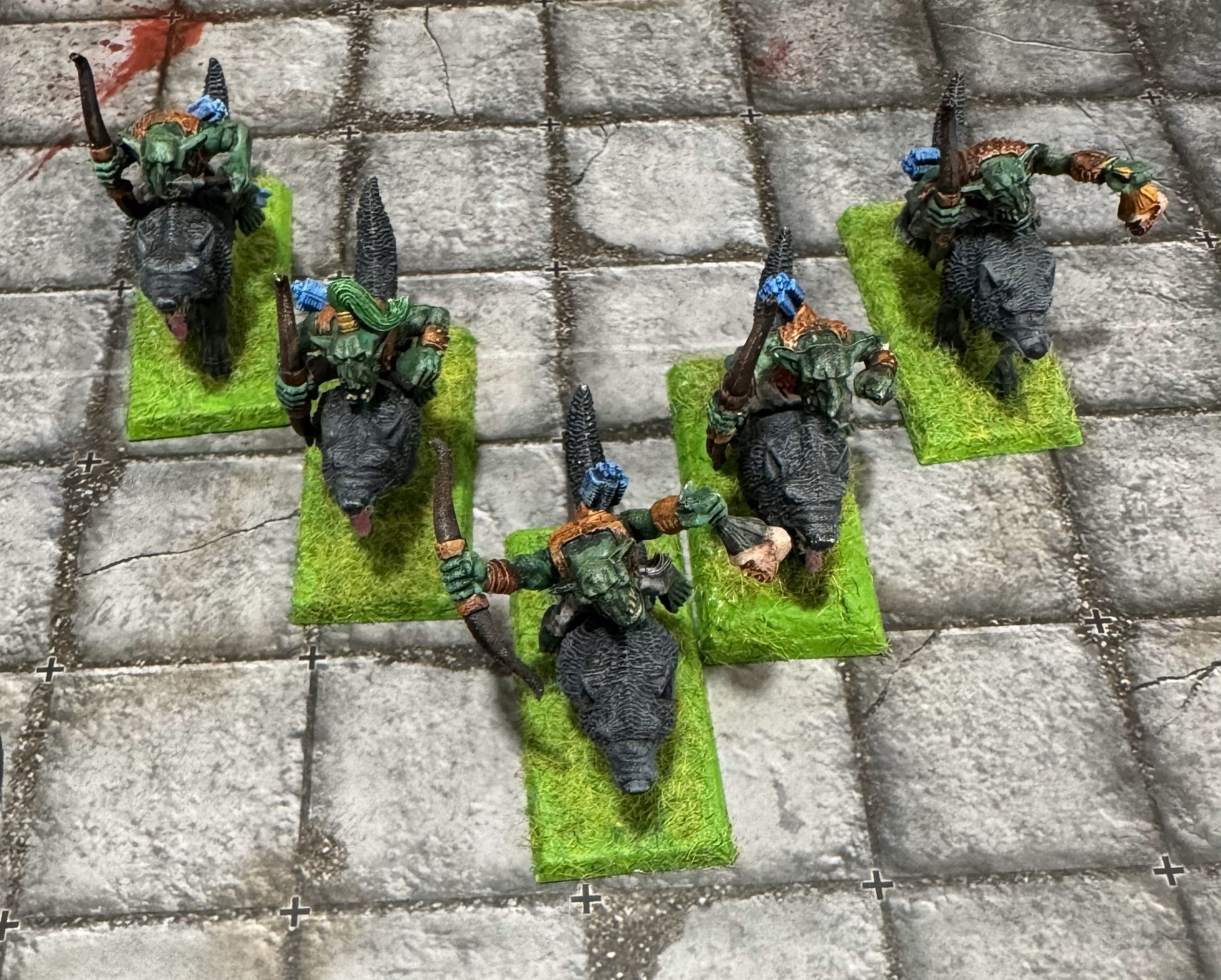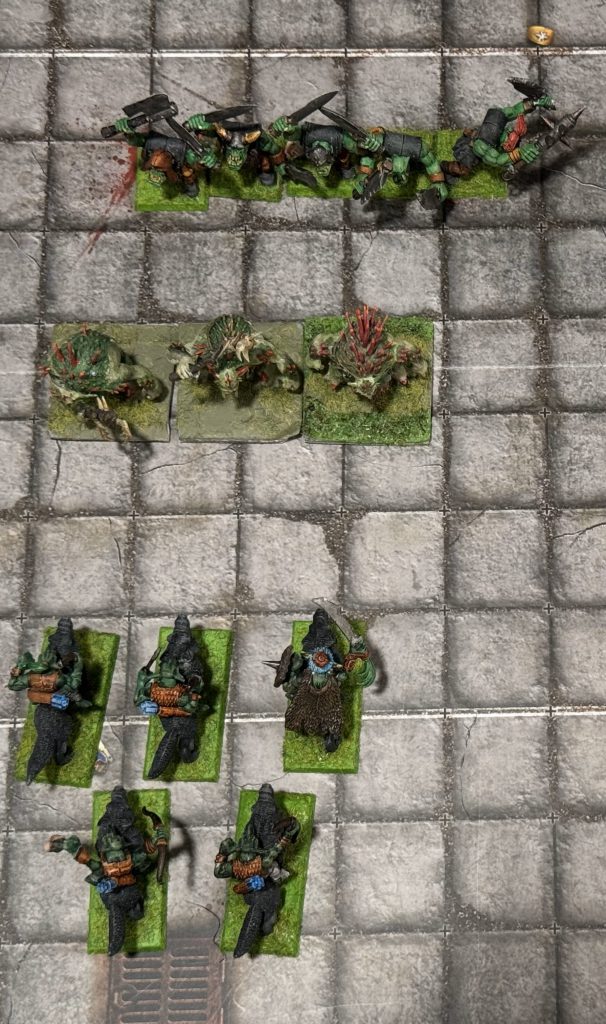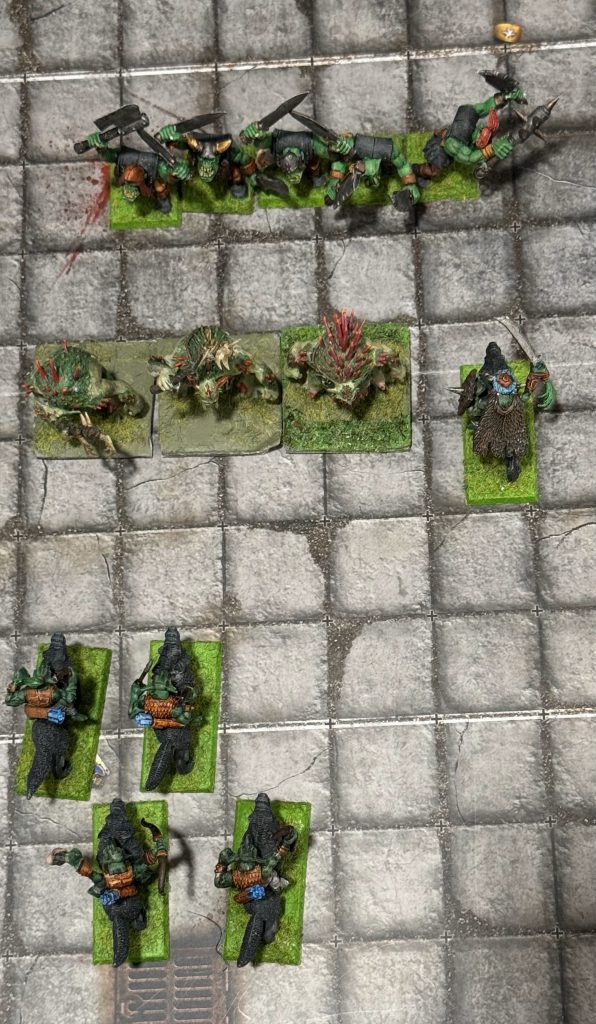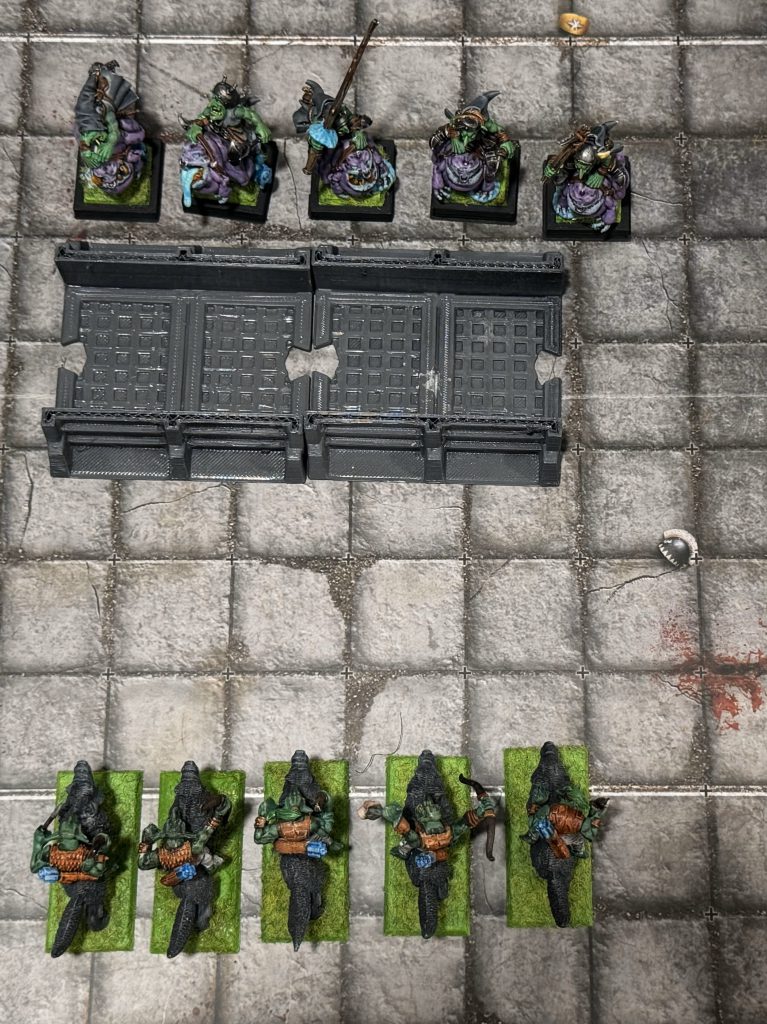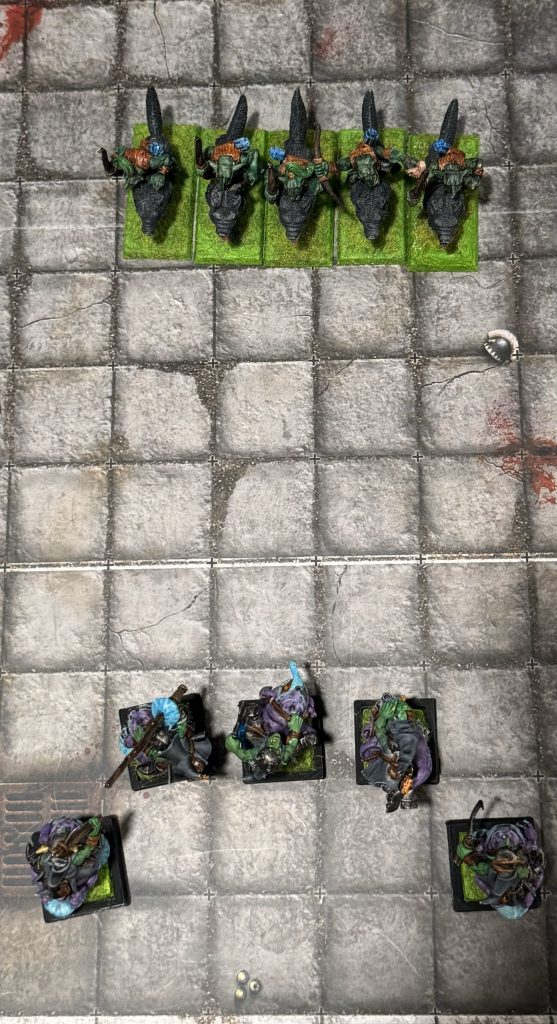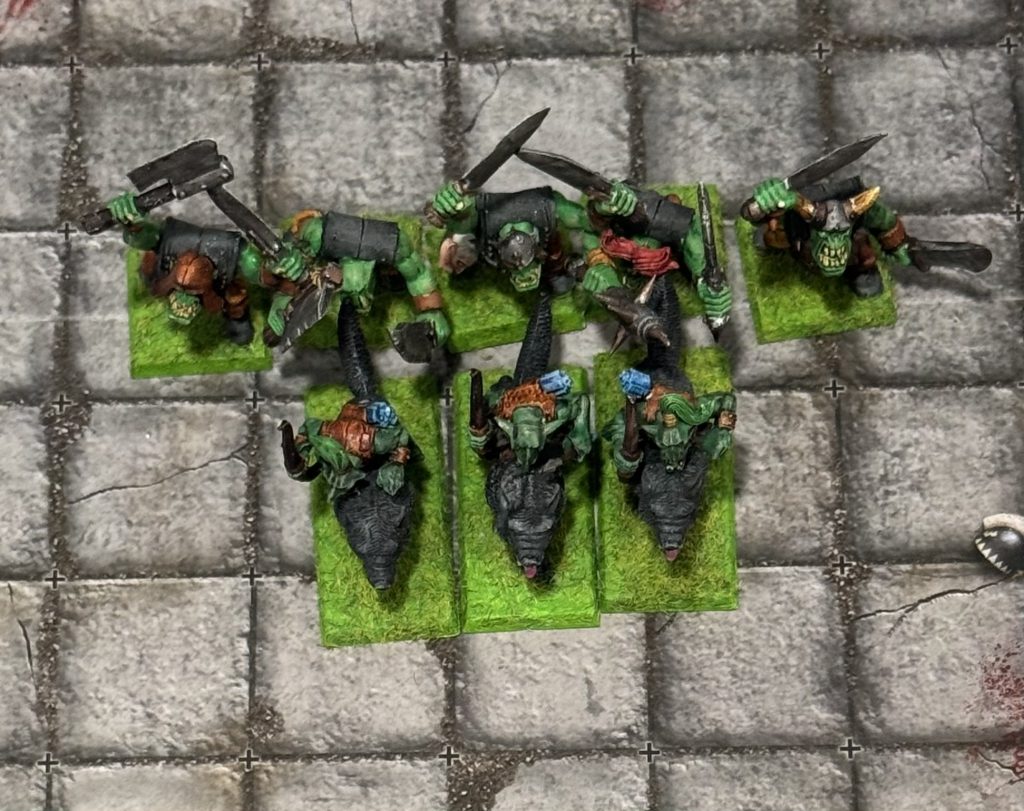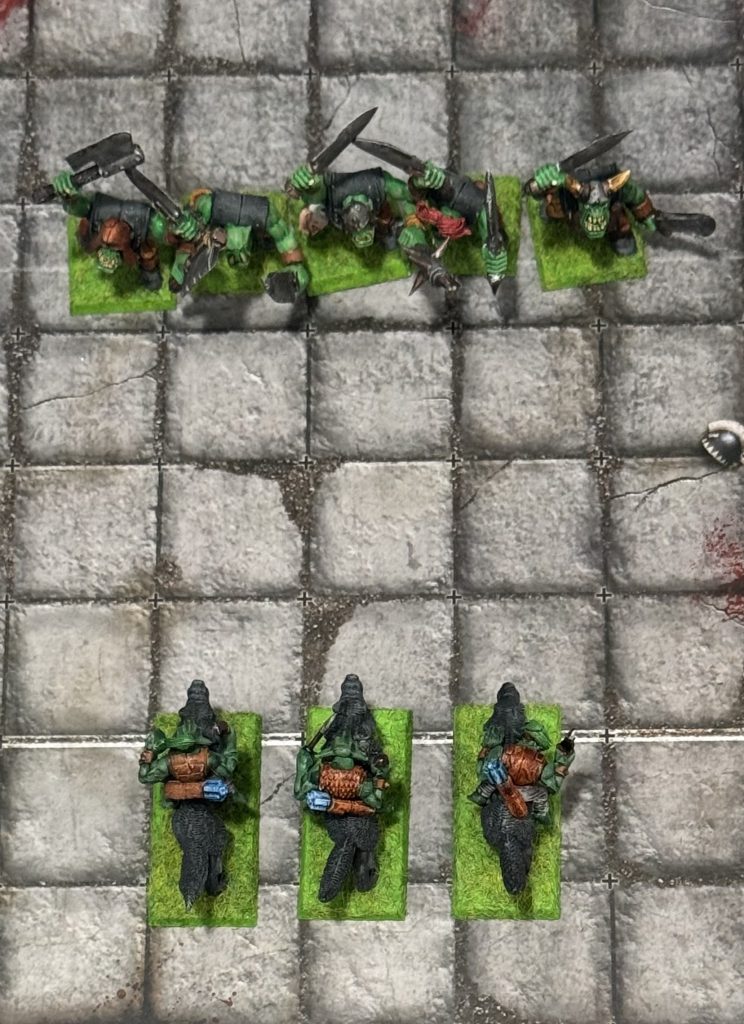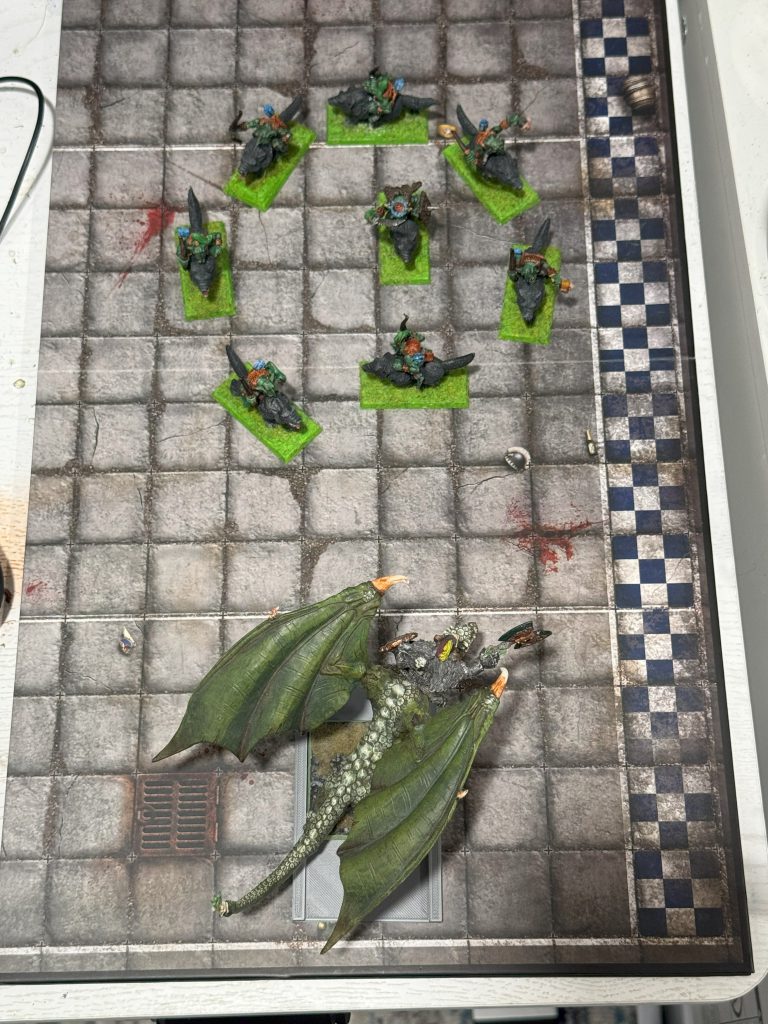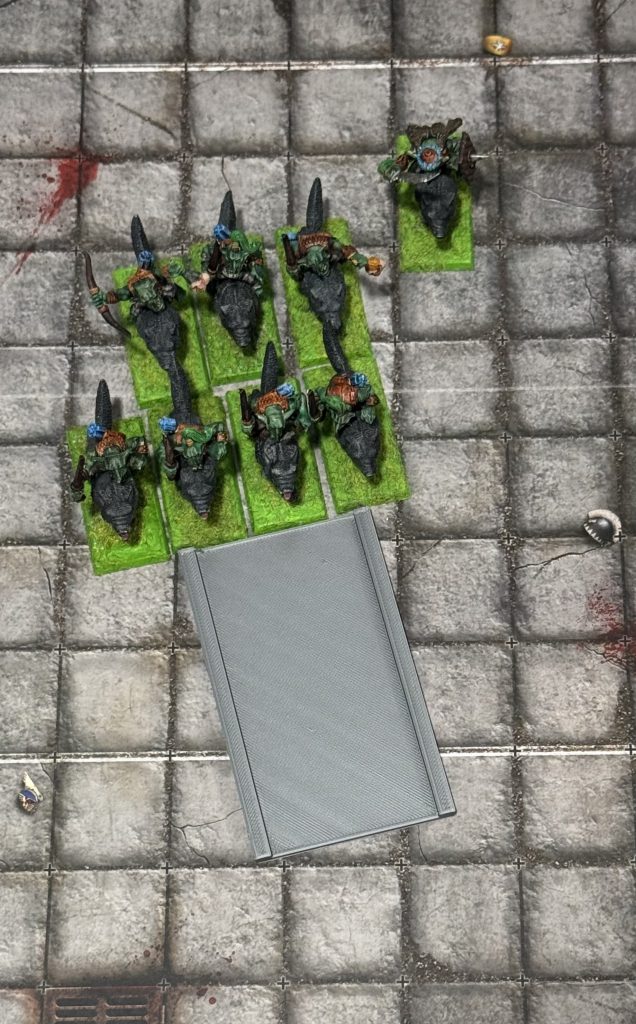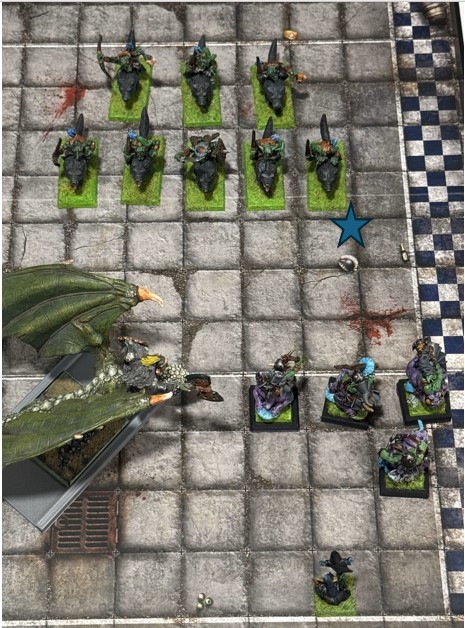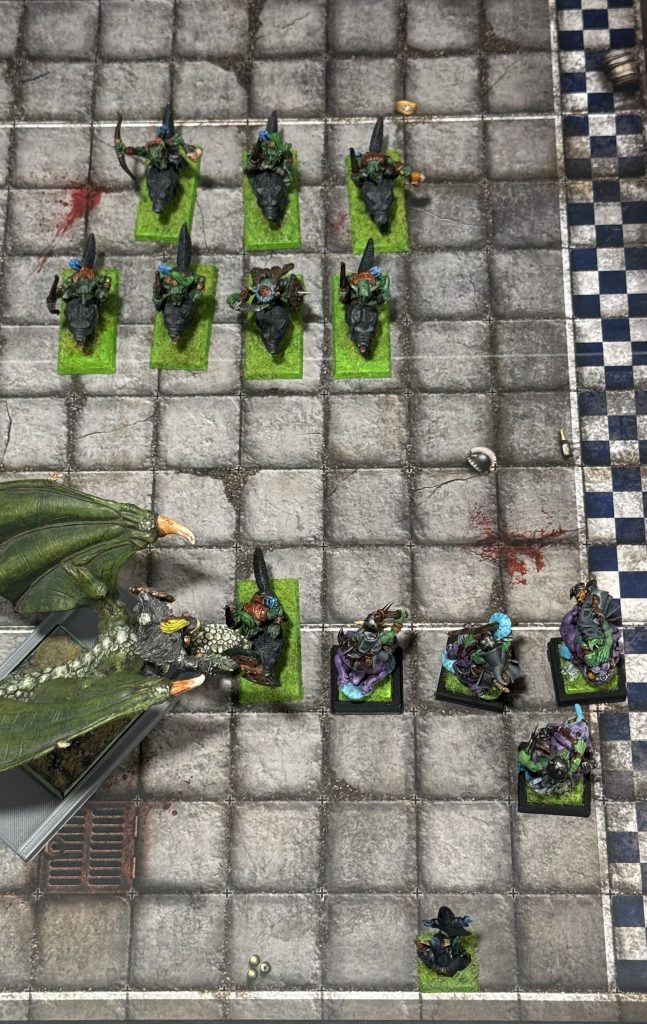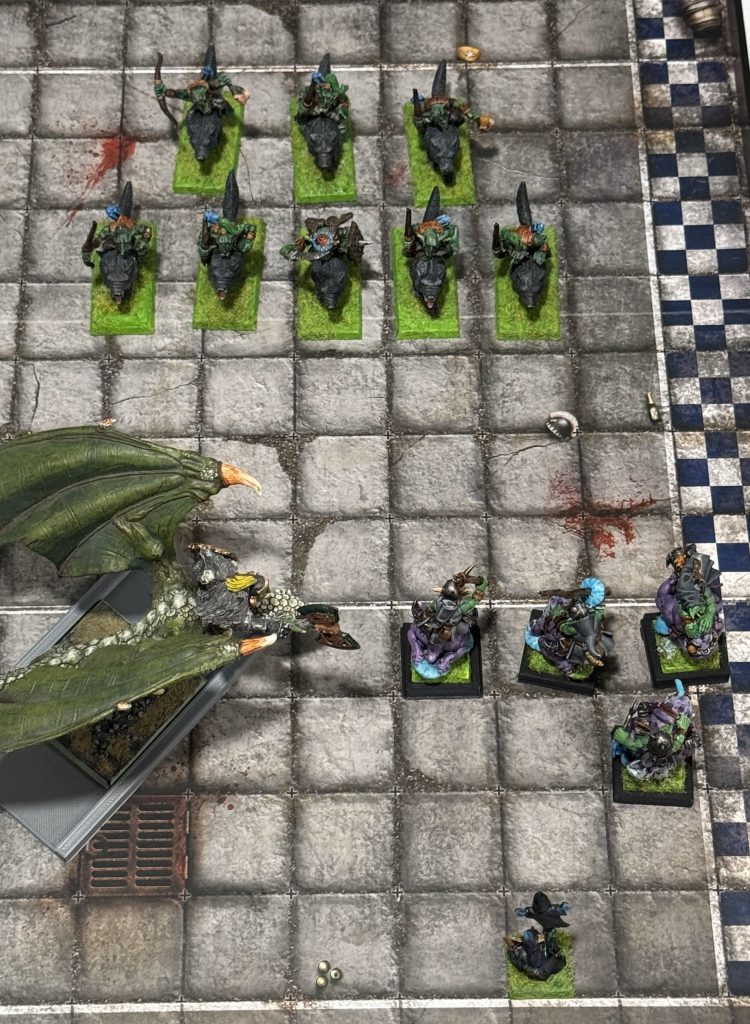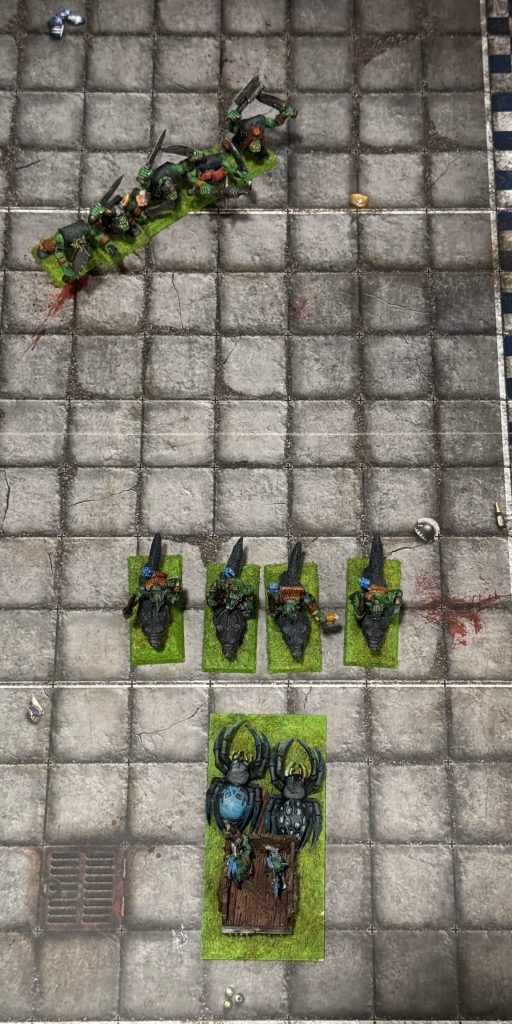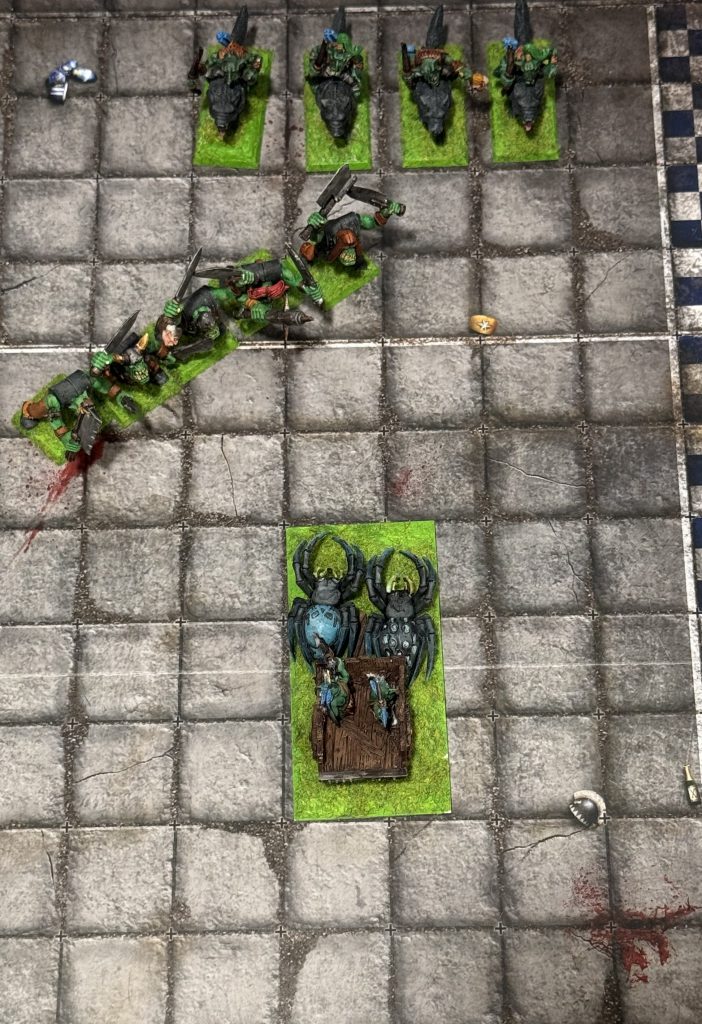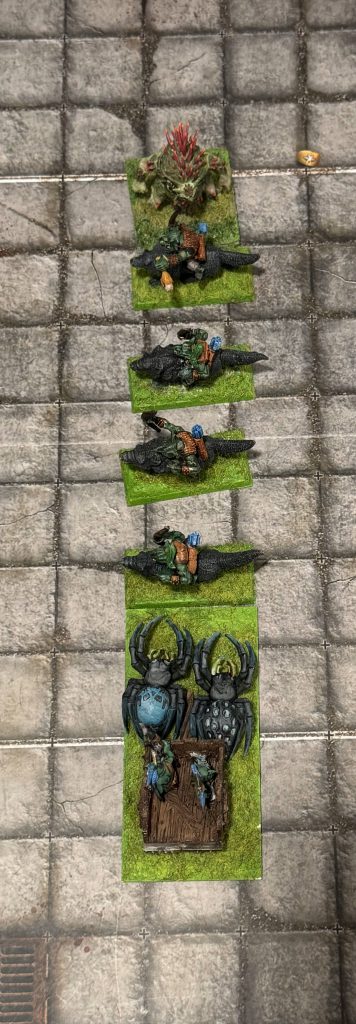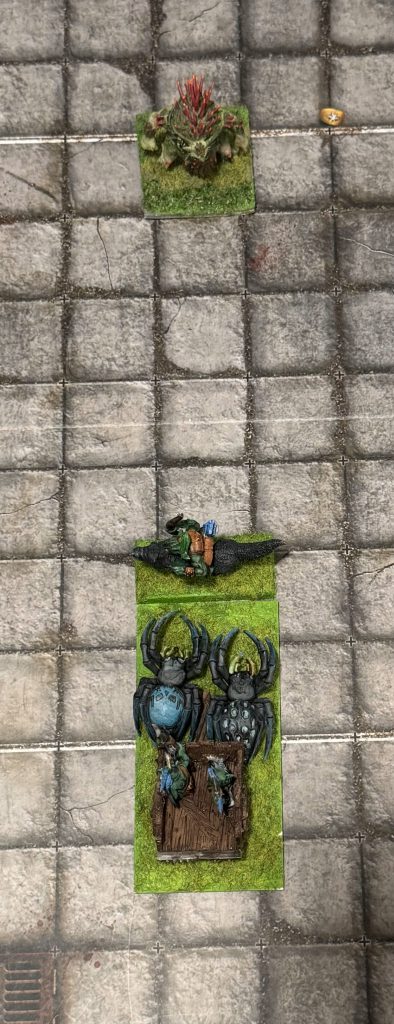The Old World Rulebook is thick, cumbersome, and formatted in a way that incites a special kind of emotion in the hearts of all of us. To quote a famous undead pirate the rules are written to be “more like guidelines” and assume the players have a lot of good faith. This works for the majority of us, but every once in a while the players come upon an interaction or rule that seems to defy the notion of a clear intent or intuitive implementation (looking at you motley crew). One of these is the Skirmisher formation type and all the rules and interactions that tag along with it. Today we explore this formation type and how it functions on the tabletop.
What Is a Skirmisher?
Let’s start by defining skirmish; it’s a type of formation. Formations are defined on page 100 of the Warhammer the Old World Rulebook (WOWR).
The skirmish formation is a type of formation units can assume during a game as long as they have the formation as part of their special rules. This can be chosen at deployment, or as part of a reform manoeuvre (page 124 of the WOWR). Skirmishers have their rules defined on pages 184-187 of the WOWR but also include some references in other areas of the Rulebook. As a result skirmishers have their own unique rules to distinguish themselves from the other formation types.
1” Apart and Coherency
“The models that make up a unit in Skirmish formation are not placed in base contact with one another. Instead, they are deployed on the battlefield in a single loose but contiguous group, in which every model is within 1″ of another model belonging to the same unit” Excerpt From Warhammer: The Old World Rulebook, Games Workshop . (Page 184)
Skirmishers have wonky coherency rules. It’s similar to how AoS and 40K do coherency but at a shorter distance. The key here is that the formation can assume any general shape as long as every model is within 1” of at least one other model. This can create for some truly wonky unit shapes
The versatility here will be very relevant interacting with other rules which we will get to in the next sections.
Facing and Line of Sight
Skirmishers treat every facing as their front arc. This rule seems intuitive in the surface but it gets a little awkward as you start working out more complex movement and charges.
Skirmishers can block line of sight “as normal” based on the models themselves.
This means skirmishers can both be used to block or open line of sight as needed and works very well for utility in tandem with the 1” rule. It also means you can easily give yourself or your opponent cover! If the skirmisher is blocking any part of the vision lines they can grant cover! (page 139 of the WOWR)
- Partial Cover: up to half the target model/unit is obscured (that means any obscuring at all)
- Full Cover: more than half the target model/unit is obscured.
It can cause some issues and mistakes with shooting and spells, highly rewarding well thought out positioning! Your own models in your own unit also block Line of Sight to each other. Many players get this wrong especially when it comes to light cover.
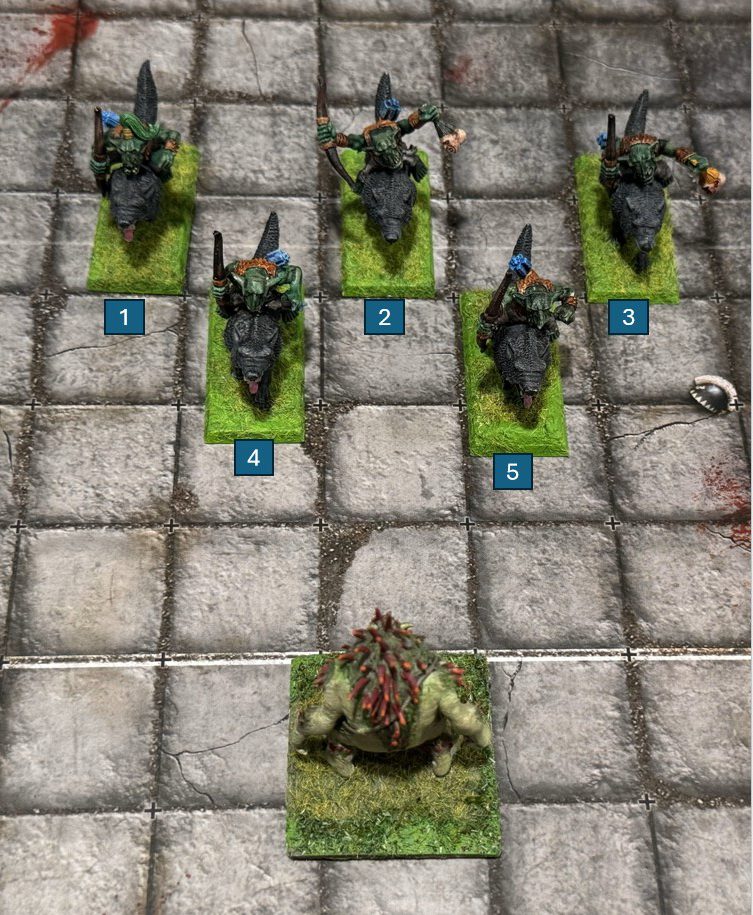
In the above picture Goblins 1 and 3 are taking a light cover penalty as less than half the troll is blocked by Goblins 4 and 5. Goblin 2, 4, and 5 are not suffering a cover penalty as their sight lines are obscured.
Other Unique Rules
- Reinforcement: Skirmishers must deploy from reinforcements so that every model is within 1” of the table edge.
- Shooting: Skirmishers of units where every model has a unit strength of 1 cause a -1 to hit when being shot at by an enemy.
- Panic: Skirmishers do not cause panic to units formed up in any non skirmisher formation.
- Ranks: Skirmishers never claim a rank bonus.
- Disruption: Skirmishers cannot disrupt enemy units.
- Characters: Only characters of the same Sub-troop type can join a skirmish unit of that troop type; e.g. A light cavalry skirmisher can only join other light cavalry.
- In addition lone characters are by default skirmishers unless their ridden mount or the unit they join has a different formation type. (page 205 WOWR)
- Units with Multiple Formation types
- Many skirmish units have another formation type listed on their profile. In these circumstances the player may choose their starting formation when they deploy/arrive on the battlefield, or can change formation as part of a reform. This can be very relevant as skirmish units do have some drawbacks.
With the general overview out of the way, lets get into the details.
Skirmishers and Movement
Skirmisher movement is very simple with a few caveats: (page 185 of the WOWR)
- Every model moves individually but must end their movement following the 1” rule (or formed up in the event of a charge)
- Models do not maneuver, they simply move in any direction. This is a little complicated but effectively they never wheel, or perform other maneuvers. They may choose to reform to change formation but otherwise stay the same “facing”.
- Skirmishers may “pivot” but may never move further than double their movement characteristic (Page 124 WOWR)
- You may not think much of pivoting but for models whose bases are rectangular a pivot can be a way to “gain” movement. So it’s important to measure out how much the pivot actually moves the model since they can never go more than double their movement value.
- A 25X50MM model that pivots 90 will gain a little less than 1″ of extra movement, a 30X60 will gain a little less than 1.5″ of extra movement, and so on. The “longer” and “Skinnier” the base is the more movement you gain by using a well timed pivot.
- You may not think much of pivoting but for models whose bases are rectangular a pivot can be a way to “gain” movement. So it’s important to measure out how much the pivot actually moves the model since they can never go more than double their movement value.
- Finally other units can never move through the skirmish unit gaps but they can be fled through or moved over top using special rules like fly.
Other than the above differences, skirmishers are affected like any other unit by traditional movement rules. They can march, but can never be in the marching column, and they can pivot individually but never maneuver (other than reform). There are a few other things to consider with the movement phase that we will cover next.
Random Movers
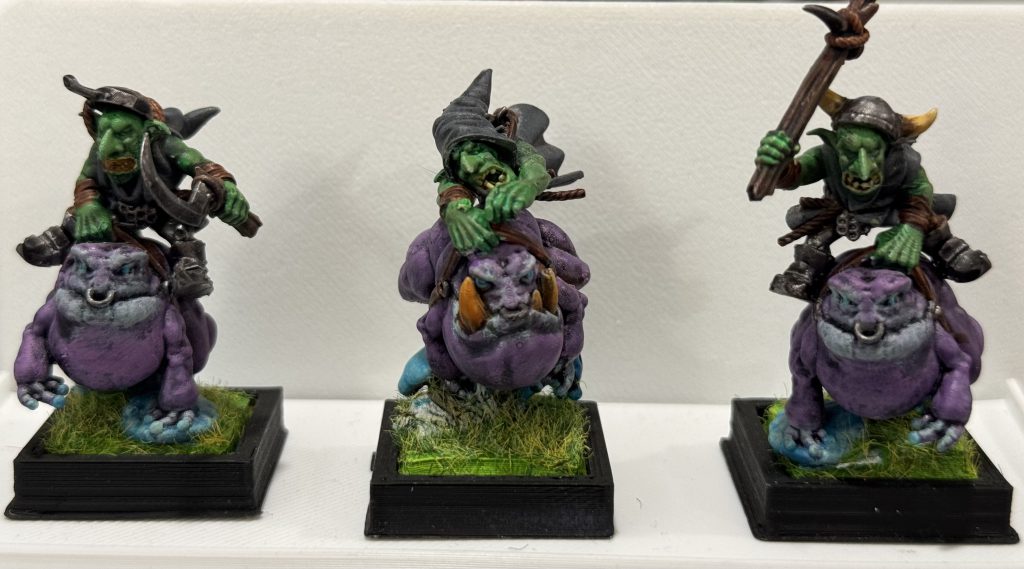
Skirmishing units that have the random movement special rule are exceptionally rare. Luckily, random movement has also been changed to be much more flexible than it used to be. Effectively you do the following:
- Roll for distance: this is the Maximum distance you can move.
- Move the models up to the distance rolled following normal rules for skirmishers and movement.
- If the models make contact with an enemy unit they “count as charging”. We will cover skirmishers and charges (and random movers) later.
- Random movers only get to reform after overrunning, pursuing, etc. but may not choose to reform during, before, or as a part of movement.
Movement Advantages
Due to the extreme flexibility skirmishers have they are kings of the movement phase. There are little to no downsides as they can move in any direction, and take advantage of pivoting and having 360 “front arcs” to set up for important charges.
The most important advantages actually manifest in other phases. It is through the movement phase that these situations are “set up”. The best part about skirmishers is they are playing a completely different game in the than everyone else.
Skirmishers and Shooting
Shooting with and at skirmishers are fairly simple situations to resolve. The greatest complexity happens with line of sight, characters, and cover. Let’s look at both sides of shooting: with and at skirmishers.
Shooting at and Through Skirmishers
- Shooting at Skirmishers: This is the simplest part to cover. Skirmishers are seen and interact normally with the shooting phase. Skirmishers have a unique special rule that protects them a bit innately from shooting attacks:
- “Enemy units shooting at a unit of skirmishers made entirely of models with a Unit Strength of 1 suffer a -1 To Hit modifier” (pg185 WOWR)
Skirmishers of unit strength one are almost always infantry and have a smaller footprint. This makes your typical skirmishing unit really good at harassing and hard to pin down. The main way to deal with these units at range is through auto hitting effects like magic missiles and vortexes, volume fire, or even the humble grapeshot from a cannon!
- Shooting through Skirmishers: One of the greatest benefits of skirmishers is granting cover while not completely blocking line of sight. These models are treated as individuals when drawing line of sight and if any model is blocking a sight lane they will grant cover to the model in their “shadow”. You can also completely screen your models from a particular threat by going base to base to block line of sight. Below is an example of skirmishers forming up to block line of sight completely.
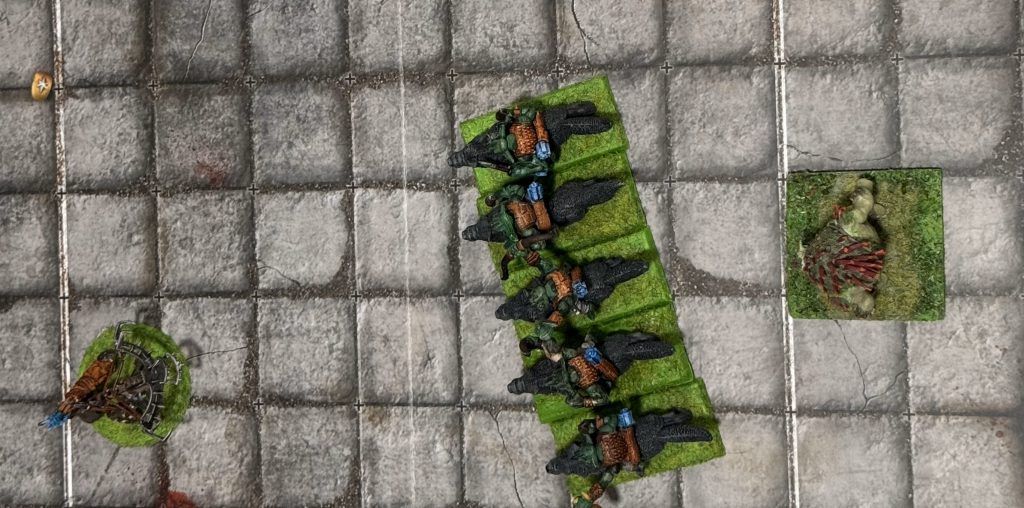
Importantly skirmishes don’t grant cover to their own unit. Even if the models within a unit have their own individual “shadows” of line of sight blocking they never count as obscuring models in their own unit.
Shooting with Skirmishers
Skirmishers are treated as individuals in their own unit for determining line of sight. This means skirmishers can:
- Block line of sight to other models in their own unit
- Grant cover to enemy models by having obscuring models from their own unit be in the way.
- Have their own 360 Line of Sight measured from each model.
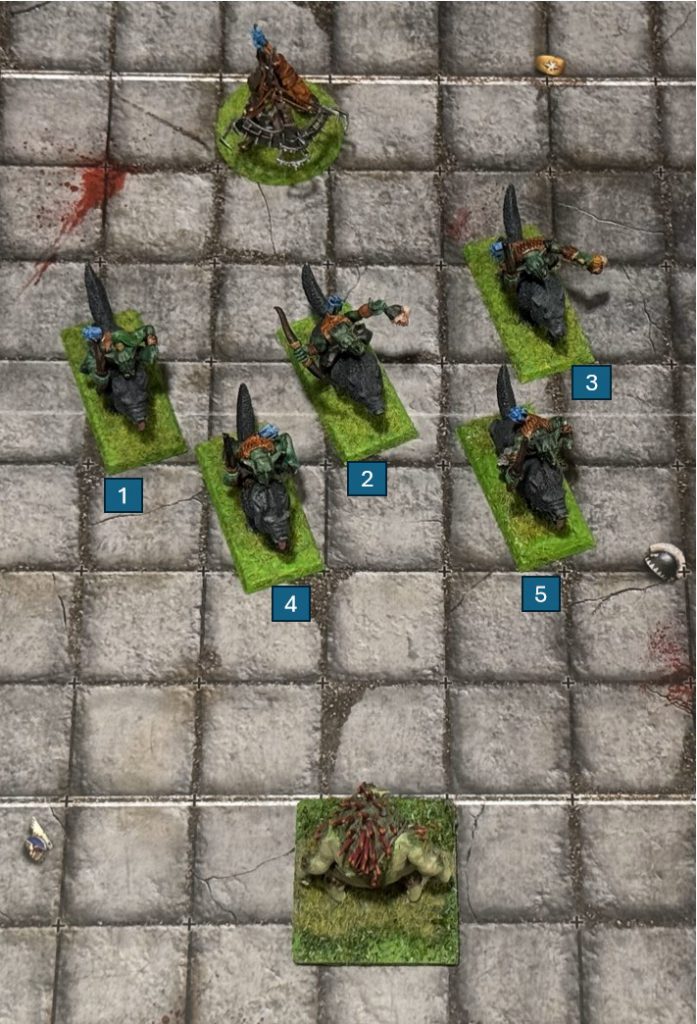
Let’s break down how this works from the example above:
- The Bolt Thrower: Would be given the Hard cover penalty for shooting at the troll as more than half the trolls base is obscured by the unit of skirmishers. The bolt thrower would have no cover penalties against the wolf riders since there is not intervening models between it and the skirmisher unit.
- The Wolf Riders:
- Wolf Rider 1 and 2 would have light cover penalty into the troll because of wolf rider 4 but no cover penalty to shoot at the bolt thrower.
- Wolf Rider 4 and 5 would have the light cover penalty to shoot at the bolt thrower because of riders 1 and 2 but no cover penalty to shoot at the troll
- Wolf Rider 3 would suffer hard cover penalty to the troll because wolf rider 5 is obscuring more than half of the trolls base.
Otherwise skirmishers follow all the normal rules for shooting. To show some examples of how skirmishers and line of sight work see the example photos below!
Skirmishers and Charging
The most complicated aspect of skirmishers other than movement is hands down the interactions with charging. Skirmishers break a lot of intuitive expectations and rules understandings when they charge because they have such a free and flexible core ruleset for movement.
Declaring a Charge
The Charge rules for skirmishers are found on page 186 and 187 of the WOWR. To start this is the except that determines charge eligibility:
“A unit of Skirmishers may charge an enemy unit that is visible to at least one of its models when charges are declared. In which arc the enemy is charged is determined as normal.”
- Simple enough right? Remember in The Old World, charge arcs are determined using the arc of the charge target. This makes determining the charge arc for skirmishers fairly straightforward.
- Poor Rules as Written (RAW): On page 127 of the WOWR when the charge arc is uncertain due to being in multiple arcs, you determine the arc by seeing which arc has the “majority” of the charging models in it from the units front rank. As written skirmishers do not have a front rank, but luckily the second sentence gives us some better context by stating the “majority” of models and that gives us some leeway. I think the best interpretation is that the arc is determined by how many models in the skirmishing unit are in the respective arc.
- Remember that if it is still unclear you take the “least advantaged” option. So if you have a 50/50 split you have to choose the arc that gives the least advantage.
- Poor Rules as Written (RAW): On page 127 of the WOWR when the charge arc is uncertain due to being in multiple arcs, you determine the arc by seeing which arc has the “majority” of the charging models in it from the units front rank. As written skirmishers do not have a front rank, but luckily the second sentence gives us some better context by stating the “majority” of models and that gives us some leeway. I think the best interpretation is that the arc is determined by how many models in the skirmishing unit are in the respective arc.
Skirmishers have 360 line of sight; this means they can also declare charges in a 360 arc from any model in the unit. To understand target eligibility please see the image below:
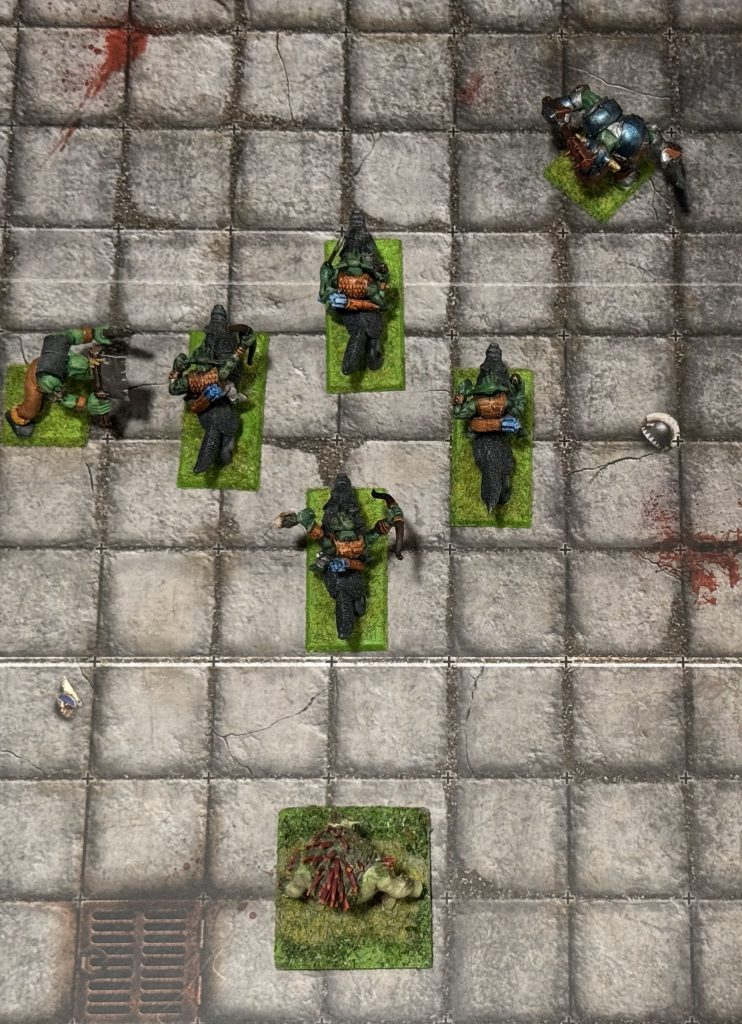
The wolf riders can charge any of the three models shown in the picture. Each charge would be a little bit different which brings us to the resolution step!
Making a Charge Move
Skirmishers roll charges as normal. As long as any model can make contact with the unit the charge is successful! This gives them some really strong range for charges and flexibility in what they can get to! I think the best way to summarize this move is to break it down by steps:
- Measure Charge distance from the closest point on the closest skirmisher model to the closest point on the charge target
- If the charge is failed: Resolve a failed charge as normal but each model moves individually starting with the closest model and then moving the rest to maintain 1” coherency.
- If the charge succeeds: Start with the closest model, move the model to make contact with thee my unit in the most direct path possible. Each model then follows suit and moves as directly as possible to form a fighting rank.
- If a model cannot make contact with the enemy unit it must “form up” behind the fighting rank B2B
- If a model cannot make it into contact with the enemy unit OR form up it is removed as a casualty following coherency rules.
It is vital to note that being as direct as possible does not mean a straight line. Skirmishers cannot wheel, but can pivot, they can make contact with any of their base facings/arcs. This is where we get into the wild west of rules. Lets explore some examples:
- The Sideswipe: Sometimes the shortest distance is actually just moving sideways! In this case, even if the skirmisher is on a rectangular base you would just move them in a straight line and contact with your side. Keep in mind you can argue that pivoting and moving straight would be the most direct route, if you can justify the pivot costing less movement than just moving in a straight line. This would give you more goblins in base to base contact with the troll and more attacks!
- The Drift: Skirmishers can charge “around” intervening units. While this can happen with other units, skirmishers don’t actually have a limit on how many times they can change direction as long as the path is the most direct. This means skirmishers can reach obnoxious places and charge around screens to get to juicier targets.
- Flying High: Models with Flight can do all the normal charging nonsense AND can charge over top of models. Keep in mind this means that the most direct route may be moving over top of a model instead of around. Models with fly and skirmish are hands down some of the most powerful units in the game.
Charging Skirmishers
Skirmishers have unique rules when getting charged by other units. There are two distinctions here:
- Getting Charged by a Non Skirmishing Unit:
-
-
- Per the WOWR, a unit charging skirmishers “must endeavor to move as directly as possible into contact with the closest visible model in the target unit.” (pg. 186 WOWR) The model follows all other usual restrictions as part of this move.
- Once contact is made the unit does not wheel to align. Instead it stops its movement and the skirmishers “form up” into a fighting rank. Models in the charged unit cannot move further than their base movement and any model that cannot make base contact must form up behind the fighting rank. Models who cannot do either are removed as casualties.
-
- Nuance to Screening with Skirmishers:
-
-
- Skirmishers cannot “redirect” a unit because they must form up to the unit charging, however they can influence the units facing by intentionally placing models as the “closest”
-
-
-
- As you can see, because the restricted closed order trolls must wheel and make contact with the closest visible model on the most direct path they are now facing the wrong direction!
- This gets more in depth when dealing with other units and circumstances and is one of the most interesting ways to use skirmishers as effective screens.
-
- Skirmishers Charging Skirmishers: If you thought the game was already broken by skirmishers then hold your hats because it gets even weirder. Let’s summarize the words on page 187 of the WOWR.
-
-
- Must follow visibility rules already stated
- Models move individually from the charging unit. You start with the closest model and move them the shortest route to the closest charge target. This means it is not the closest model but whatever model would result in the shortest possible distance to make a legal charge.
- Once the first model makes contact, the remaining models move to form a fighting rank using the most direct route possible. This fighting rank can be as long as there are models capable of moving to form it. It dos not require the models to be base contact with the charge target but they must form a cohesive rank. If a model cannot move far enough to be a part of this fighting rank they will form up behind and if they can do neither they are removed as a casualty.
- Now the charged unit forms up like they would into any other unit that is charged.
- This rule gets really ugly when there are intervening units, terrain, and other obstacles that can hinder the formation of the initial fighting rank.
-
-
-
- As you can see this can get messy quickly and can result in some truly absurd combats! You can also use it to game your opponent and kill models that can’t form up. In the example above if the squig hoppers were only move 4 or 5 they would have likely lost 2 or 3 of their unit because they could not move far enough to form up!
-
Random Movers and Charging
Because random movement rules and skirmish rules are very silly it is important to note how they interact. In all circumstances, once the first random mover makes contact with an enemy unit you treat it as a charge. Random moving skirmishers follow the same restrictions for arcs that other random movers do. It also means your random movers have a high chance of making charges with some models but being unable to form up or finish out your fighting rank!
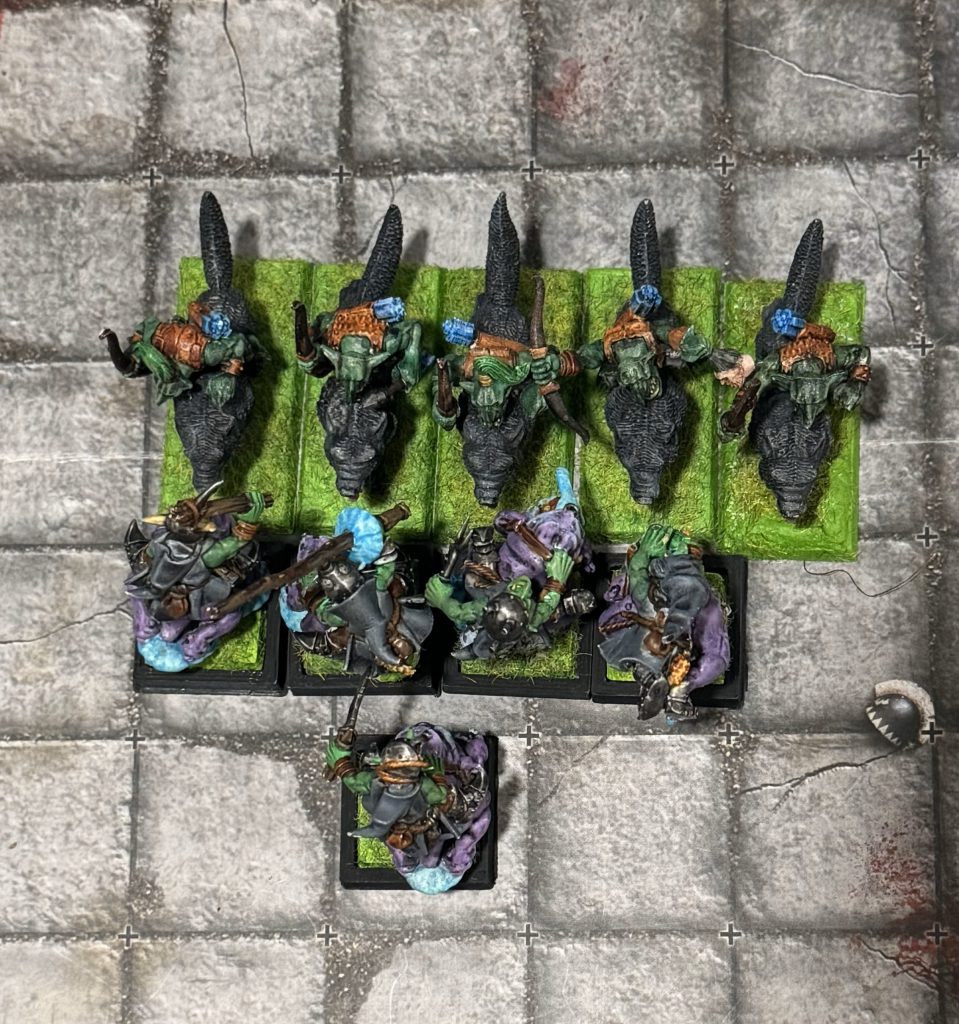
-
-
- In the example above because the back squig hopper was so far away he was just short of being able to both make the fighting rank and/or form up. This means he dies!
-
Another interesting key here is random movers do not have to make contact with the closest model. You can move any model first and make contact and then the rest of the unit can form the rank or form up. This is because it does not count as a charge until you make contact! This is a great way to ensure you maximize your fighting rank! Just remember that after the first model makes contact the rest follow the rules of closest model moves first!
-
-
-
- In this example you would make contact initially in the most expedient way to ensure all skirmishers can get into combat. This will ensure you get the most out of your fighting rank and prevent losing attacks or models.
-
-
The charge phase is the most complicated portion of skirmish rulesets and it’s important to think it through and have a lot of good faith communication with your opponent. There will be lots of weirdness that can occur that we will cover in the “Nonsense and Skullduggery” section below.
Skirmishers and Combat
Finally, skirmishers in combat are actually pretty simple! They fight as normal with other units, they never get a rank bonus, they can never disrupt an enemy unit, and that’s about it! The weirdness gets to be in the resolution of combat and falling back, pursuit rolls and fleeing.
Give Ground
- Loser: if skirmishers give ground they follow all the normal rules for giving ground. They stay in the same unit footprint and simplify moves back.
- Winner: Skirmishers can restrain and reform as any other unit. They may also follow up as normal.
- Change Facing: There is a RAW discrepancy here since skirmishers are not allowed to maneuver. I think because of page 185 stating skirmishers do not maneuver, they cannot preform the free turn.
Flee and Pursuit:
- Loser: Skirmishers flee like any other unit. The rules do not give any exceptions or clarifications. A skirmisher unit that flees will pivot about its center and move directly away, keeping the same unit footprint.
- Fall back in good Order: Skirmishers fall back in good order just like any other unit!
- Winner: As above, Skirmishers follow all the same rules for pursuing. You don’t get to do any sort of gamey nonsense here. The unit moves all together and keeps its same shape/footprint until it can reform in some way or moves the following turn.
- Into Combat: If they pursue into combat you “count as having charged” but there is nothing in the rules saying you get to change your units shape or increase the fighting rank. Essentially you are “stuck” in whatever form you started the pursuit in.
- Does not Make Contact: Skirmishers follow the same rules as any other unit that does not make contact after winning combat and making a pursuit roll.
That’s pretty much it for skirmishers in combat and the aftermath of combat. It’s fairly simple!
Wonky Nonsense and Skullduggery
Because of how skirmishers interact with the rest of the game there are some seriously silly things you can do with them in certain situations. Well close out the article with some that I have thought of:
- Character Safehouse: Characters that are more than 1″ away from skirmishers can still be insulated from many threat types by creating a skirmisher “bunker” around the character. Lets see a picture of this in action:
- The most obvious use of this is to play prevention for templates, and insulate the character from shooting or flying wizards that might get “behind” or around your Look out sir screens. But there is another use!
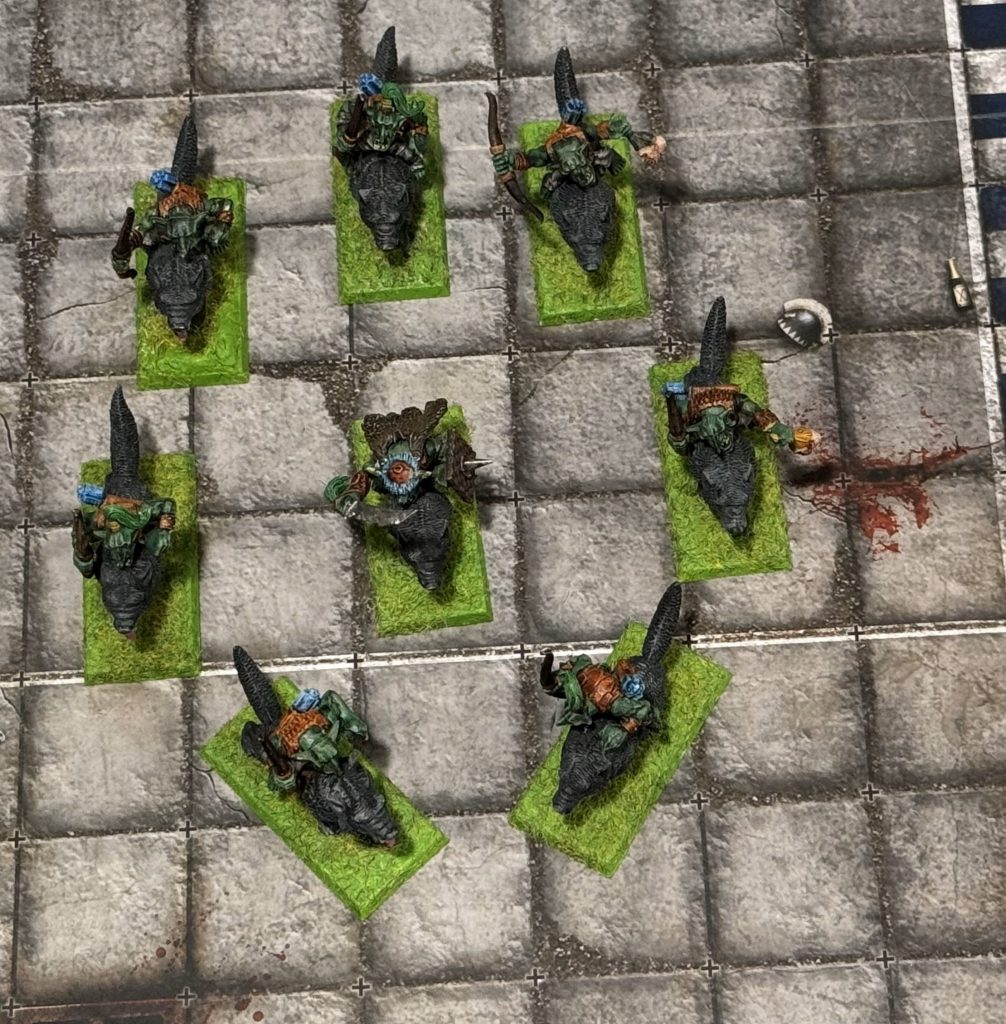
-
- You can protect key characters from charges from those obnoxious flying units by taking advantage of the “closest model” rule when charging. See example below!
-
- By setting up the one wolf rider off to the left and furthest forward the wyvern boss now has to charge that wolf rider in the most direct route which will pulls it off the path the leads into the hero! This requires clever and clearly communicated positioning as well as being very clear your character has not actually joined the unit.
- Charging Places you have no business going: We touched on this earlier in the charge rules but I wanted to dive into a very relevant and specific example to demonstrate just how strong skirmishers can be at tagging lone characters, war machines, or weaker units to take down.
-
- In the example above we see the closest goblin (with the star) moves first and must take the most direct route to the exposed goblin shaman. This wolf rider can “thread the needle” and go between the wyvern boss and the hoppers to make base contact with the goblin wizard. But there are some caveats:
- If you cannot from up with all the wolf riders the ones that cannot make it are removed from play!
- In the pictures above we can see the casualty count from this risk in options 1 and 2! These are the goblins still hanging out and not formed up. All those models would die
- Luckily lone characters are skirmishers and skirmishers treat every arc as a front arc. Against a non skirmisher I would have to charge his front facing arc. But in this case as long as it is the most direct route regardless of which arc you tag you can go into his side arc to get more of your models in!
- This requires good positioning on your part and some mistakes on your opponents part but its important to look out for these charges and try to set them up as often as you can!
- In the example above we see the closest goblin (with the star) moves first and must take the most direct route to the exposed goblin shaman. This wolf rider can “thread the needle” and go between the wyvern boss and the hoppers to make base contact with the goblin wizard. But there are some caveats:
- Screening Techniques: We discussed screening techniques earlier but I wanted to provide a couple more options for using skirmishers as screens effectively.
- Layering: Many bonuses in the game are shut down by reducing and or mitigating the distance units can overrun. You can also cause disordered charges by forcing awkward accidental contact with multiple units or lock a nits facing in a direction they have no desire to go. Below the chariot will overrun less than 3″ and lose its impact hits making it easier for the boys to take down!
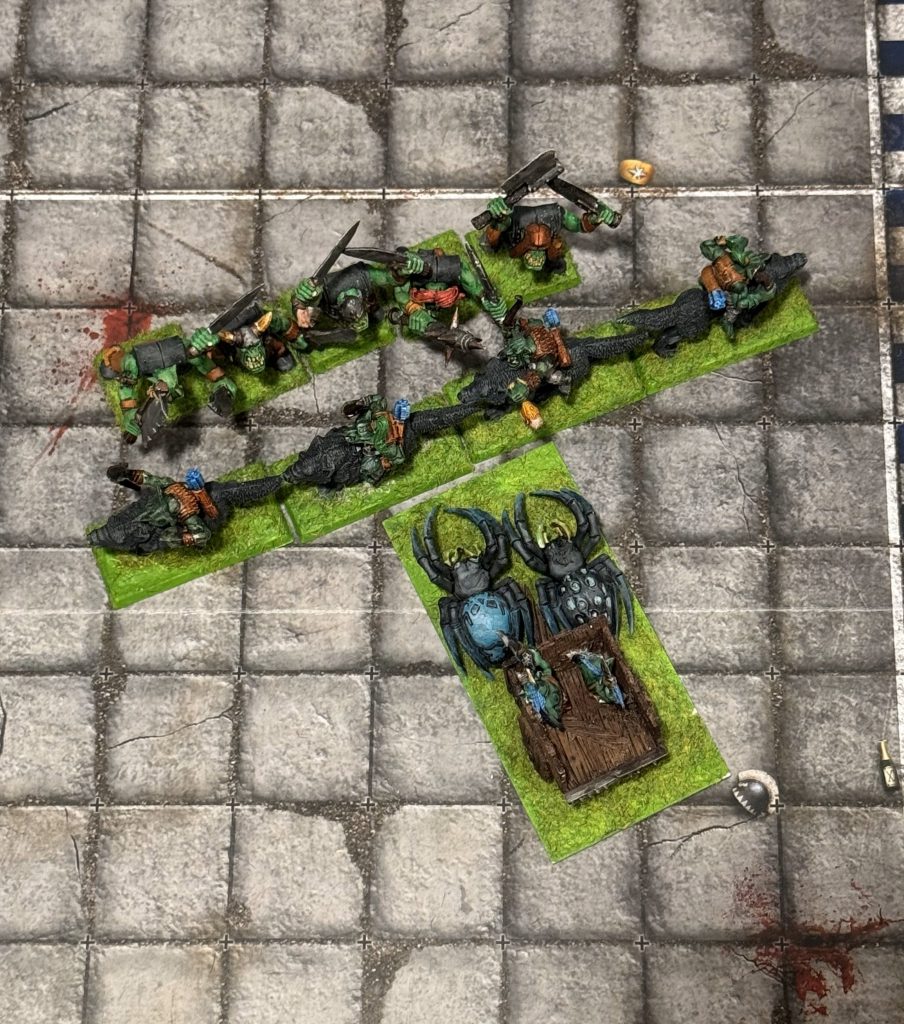
-
- Units with feigned flight: Skirmishers have lots of ways to get mileage out of fleeing. In fact its almost never a bad idea to flee any skirmisher with feigned flight unless you absolutely need them to stand still. Setting up a very close up screen of swift moving skirmishers to hinder movement and force an awkward charge and then fleeing away can cause an opponent to expose themselves and be caught out of position easily.
- The fatal error situation: The last awkward scenario I want to discuss is when you charge a unit of skirmishers with two or more units and they cannot form up to all of them. This results in a game breaking moment where the skirmishers can only form up to one unit. There are a couple ways to resolve this and I want to demonstrate below:
- The law of simultaneous effects: This applies the rule that the active player decides the order of simultaneous effects. Since charges are resolved simultaneously the active player choose which movement to complete first. See below for the steps:
- The charging unit contacts the skirmishers
- The skirmishers form up to the first unit moved
- The second unit then attempts to complete a charge. This may result in what would have been a successful charge failing in the skirmishers move far enough away as they form up.
- The law of simultaneous effects: This applies the rule that the active player decides the order of simultaneous effects. Since charges are resolved simultaneously the active player choose which movement to complete first. See below for the steps:
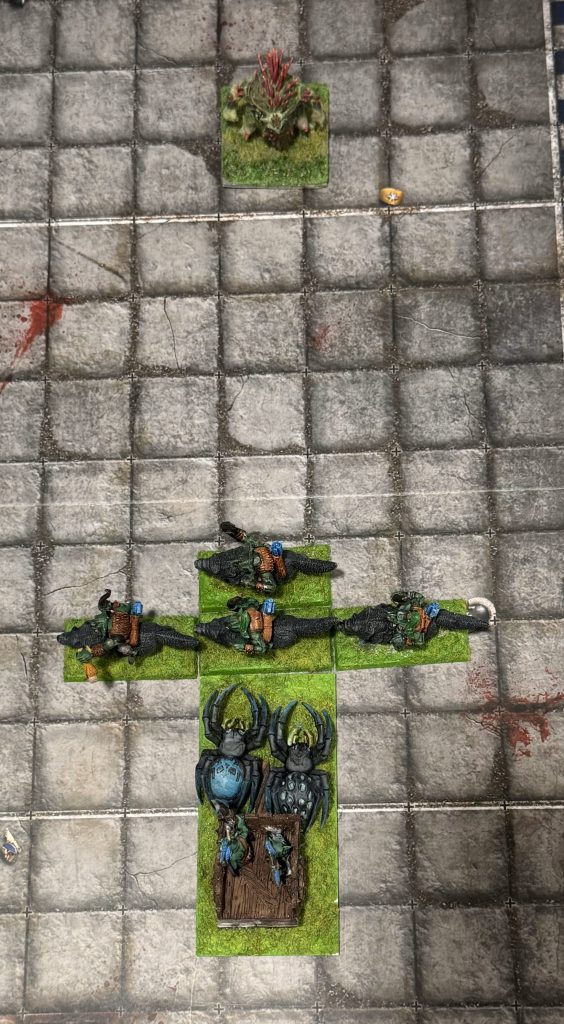
-
- The nuclear option: The other option is that the entire unit dies. Yes…this is a possibility because skirmishers that cannot form up…die. So if none of the models can actually form up to both charging units the whole unit is deleted. Another similar option is only a single model survives, and its one of the models that are initially contacted by one of the charging units. This option is hilarious but feel it breaks the spirit of the game.
There are other potentially awkward ways you can use skirmishers and I am sure there are things I have not noticed or thought through yet. The bottom line is skirmishers are playing an entirely different game than everyone else and the core rules do not seem to account for it in many circumstances. This can result in some truly fun and silly interactions but can also cause a lot of frustration for both players. As always with gaming clear communication, abiding by the social agreement, and good sportsmanship are key to making these wonky rules work and give everyone a great experience!
Have any questions or feedback? Drop us a note in the comments below or email us at contact@goonhammer.com. Want articles like this linked in your inbox every Monday morning? Sign up for our newsletter. And don’t forget that you can support us on Patreon for backer rewards like early video content, Administratum access, an ad-free experience on our website and more.
